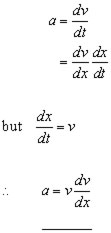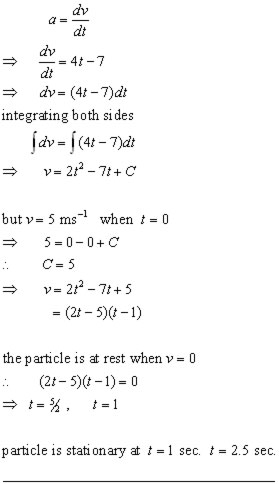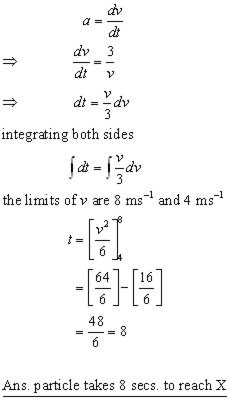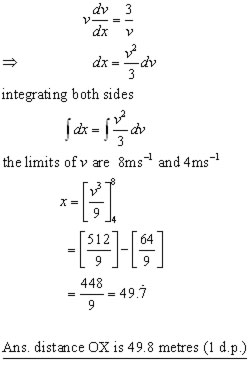Home >> MECHANICS, Linear Motion, non-uniform acceleration
theory |
Consider a particle P moving in a straight line from a starting point O.
The displacement from O is x at time t .
The initial conditions are: t ≥ 0 when x=0.
If v is the velocity of P at time t, then :
![]()
The acceleration 'a' of particle P is defined as:
![]()
or alternately,

Problems on this topic are solved by analysing the information given to form a differential equation. This is then integrated, usually between limits.
Example #1
A particle moves in a straight line such that its acceleration 'a' at time 't' is given by:
![]()
If the initial speed of the particle is 5 ms-1, at what values of 't' is the particle stationary?

Example #2
A particle moves from a point O in a straight line with initial velocity 4 ms-1.
if v is the velocity at any instant, the acceleration a of the particle is given by:
![]()
The particle passes through a point X with velocity 8 ms-1.
(i) how long does the particle take to reach point X?
(ii) what is the distance OX?(1 d.p.)
(i)

(ii)

[ About ] [ FAQ ] [ Links ] [ Terms & Conditions ] [ Privacy ] [ Site Map ] [ Contact ]
